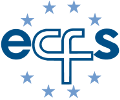Updated 09 May 2014
New this Year - The ECFS welcomes the submission of Interactive Case Studies
The Interactive Case Studies submission system is now closed
Deadline for submission: 17 January 2014
Case Studies must be submitted in English.
Submission is open only to fellows who are under the age of 40 as of 17 January 2014.
Case Studies can be submitted from all fields of CF.
Submissions are to be made using the electronic online system – no other submission medium may be used. Case Studies sent by fax, post or email will not be accepted.
The Interactive Case Presentation session is an educational session using audience response system technology. This feature will allow the audience to answer questions asked by the presenter during the talk. Each interactive case presents an evolving patient history and a series of questions designed to test the diagnostic and/or therapeutic skills of the audience. The audience will receive immediate feedback on the answers and treatment choices, along with the opportunity to compare their final score with their peers. A panel of experts in the field will facilitate the discussion and foster exchange of information or discuss treatment possibilities based on their expertise and knowledge of the latest scientific publications.
The session will include up to 4 presentations.
Format for presentation:
Time: 22-24 minutes
The online submissions should include an interesting or unusual case which challenges the audience to provide interactive responses. A maximum of 3500 characters may entered in the online submission for the case overview. At the last step of the submission process you need to fill-in at least 3 questions and 3 answers with a maximum of 5 questions and 5 answers.
The target structure for the case studies is as follows:
1. Symptoms – brief description of the patient’s initial symptoms.
2. History and examination – description of the patient’s history and results of initial examinations.
Q1. What might the diagnosis be?
Provide 3-5 alternatives
Provide the answer
3. Clinical diagnosis – clinical diagnosis and justification
4. Further investigation – additional tests performed
Q2. What might the diagnosis be following the further investigation?
Provide 3-5 alternatives
Provide the answer
5. Diagnosis – conclusion of all tests and investigations
6. Treatment – brief description of the course of treatment.
Q3. What should the treatment be?
Provide 3-5 alternatives
Provide the answer
Accepted fellows will be granted free registration and an award of 500 Euro will be presented for the selected Case Studies.
A few principles on how to write good Multiple Choice Questions
1. Relevant content
The content is used frequently, is relevant and important. No rarities, subtleties, trivialities.
2. Application of knowledge, not only theory
The question tests the application of knowledge, does not only test how the candidate recalls
isolated theoretical facts.
3. Focused questions and homogeneous answers
The question focuses on one relevant aspect of the topic, all proposed answers belong to the
same content dimension (i.e. diagnosis, or causes, or management decisions etc).
4. Clear and unambiguous answer
The best answer clearly stands out. Avoid “correct” answers with existing controversial
doctrines.
5. Appropriate level of difficulty Neither too easy nor too difficult
6. Unambiguous, concise and simple phrasing
Avoid trick questions, double negatives. Use only common abbreviations, short sentences etc.
Avoid imprecise qualifications (often, usually etc).
7. Avoid cues
Cues can help candidates guess the correct answer. Examples are:
• One answer is much more detailed than the others
• Only one answer follows grammatically from the stem
• Non logical order of the answers
Questions to be addressed
Q1. What might the diagnosis be?
Provide 3-5 alternatives
Provide the answer
Q2. What might the diagnosis be following the further investigation?
Provide 3-5 alternatives
Provide the answer
Q3. What should the treatment be?
Provide 3-5 alternatives
Provide the answer
